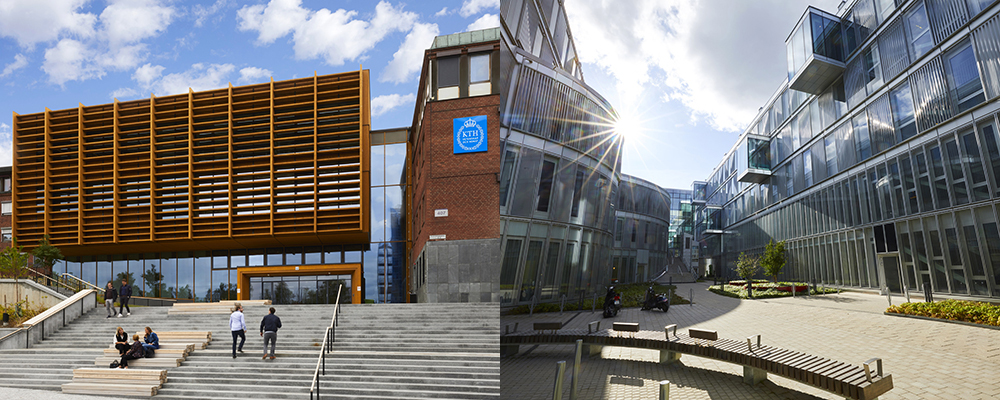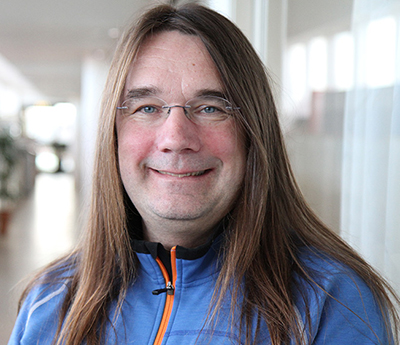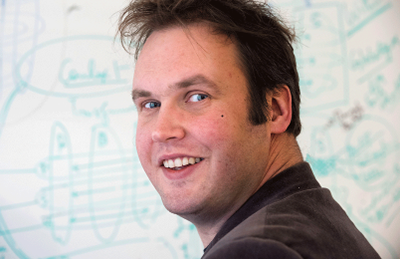“Together we showed the very best of KTH”
– Lightning speed mobilization for 700 extra foundation year education places

The assignment from the government late this spring was: 700 extra foundation year education places, starting this autumn. KTH’s solution was to develop two new digital foundation programmes in just six weeks.
It is said that one thing engineers have in common is that they are good at solving problems. And when the Swedish government late this spring assigned KTH to produce extra foundation year education places for just over 700 students, starting this term, the university demonstrated problem-solving at the very highest level. A steering group and a working party were appointed and by 15 June the concept was ready: two digital distance learning foundation year programmes, supplemented by physical meetings on campus, one in Södertälje and

the other one in Flemingsberg. Despite that the application opened as late as 15 July, 500 extra foundation year education places could be filled.
“We were able to show that we can collaborate between the schools, and everyone was focused on solutions. Just imagine! 500 students, that is an upper secondary school. Sort it out in two months! And we made it! We really did an amazing job,” says Leif Kari , Vice President for Education, who was in charge of the steering group’s work.
Many people in the staff contributed
He makes a point of emphasising how grateful he and the rest of KTH’s management team are to everyone who, without hesitation, contributed to make this happen.
Sebastiaan Meijer , Head of Department and Vice Dean of the School of Chemistry, Biotechnology and Health, who was in charge of the working party, feels the same. When he heard about the assignment, he immediately raised his hand and wanted to contribute. However, above all he wants to highlight each and every one who

made a contribution.
“Together we showed the very best of KTH. If something really needs to be done, we can deliver,” Meijer says, and he continues:
“But it is not just about the teachers. There are also many other resources, such as infrastructure, digital material, educational administration, the library and so much more that has been required.”
In terms of course content, the study programme in Södertälje is identical with the standard foundation programme. It provides eligibility for the Master’s degree programmes (civilingenjörsutbildningarna) and the Bachelor’s degree programmes in Engineering (högskoleingenjörsutbildningarna), as well as to the subject teacher programme specialising in technology. The difference is that this programme, just like the extra foundation year education programme in Flemingsberg, is set up from the beginning as a digital study programme with distance learning. This is something that could make it easier for KTH to recruit students outside Stockholm. They can simply stay in their home municipality and come to Stockholm and KTH when it is time for physical meetings on campus, which are held on average a couple of times every other week.
A more diverse student population is all about quality
The concept also helps KTH to broaden its recruitment base in other ways. The foundation year education programme as such provides an opportunity for students with a different background – for example those from families who do not traditionally go into higher education – to come to KTH. This also applies to students who have been out at work for a while, but now want to invest in an education.
“Of course, it’s about justice and democracy. But above all, it is all about quality. If we have a much more diverse student population from which we can recruit, it is also more likely that we will attract the right students. In our experience, students who have completed the foundation year education programme perform much better in their study programmes at KTH,” Kari says.
In terms of course content, the extra foundation year education programme in Flemingsberg differs somewhat from the standard foundation year education programme. This programme is aimed directly at the Bachelor’s programme in Engineering (högskoleingenjörsutbildningen) and provides eligibility for that programme only.
Instead of studying taking the high school course Mathematics 4, students take three courses that provide a total of 10 high school credits: introductory courses in Programming Engineering plus one that is called “utbildningsgemensam kurs”, an interdisciplinary course. The credits achieved in these courses could be credited to the students when they start a Bachelor’s programme.
“They get off to a flying start,” Kari says.
Important to get people into the labor market quickly
He believes that this specific initiative is important both for society and for KTH.
“For society, it’s important to get people out into the labour market quickly. And the Bachelor’s programme takes three years. For us at KTH, it is important to raise the profile of the Bachelor’s programme in Engineering. Because it is overlooked sometimes. At many meetings one attends, one sometimes get the impression that some people think all we do is train Master´s students. But that’s far from the truth,” Kari says.
According to Sebastiaan Meijer, the new extra foundation year programmes have started off very well. Just as expected, there is quite a lot of variation among students in terms of age, background and prior knowledge, compared with the standard foundation year programmes, he says.
“The level of motivation is very high. For the teachers, it is very intense because the workload over the summer has been high and some things are new or are being done in a new way. But many of these things are one-off investments, which we really will benefit from later,” Meijer says.
Håkan Soold